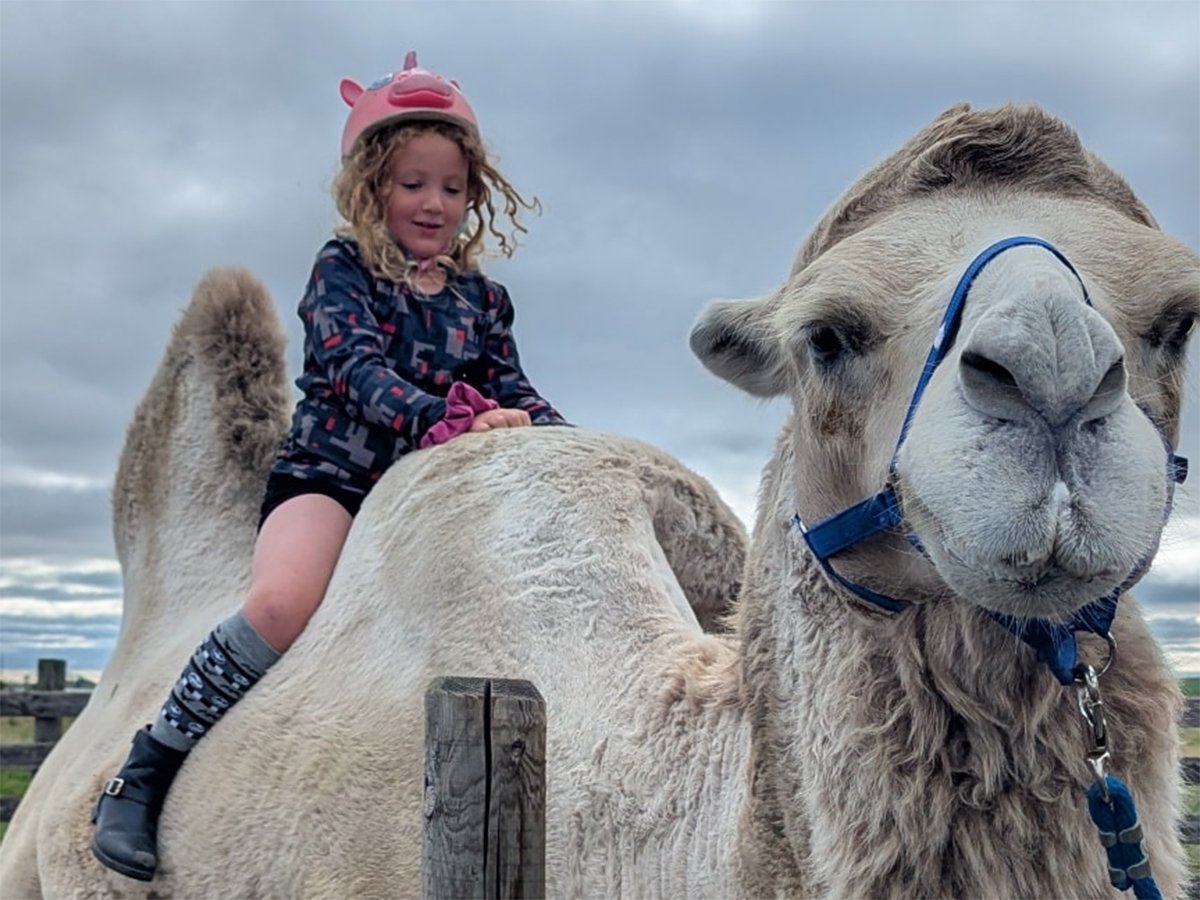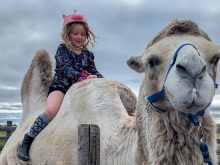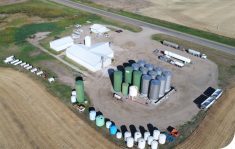DAUPHIN, Man. – After quitting the hog industry in the 1990s, Ken and Pat Farquhar set out to find another use for the empty barns on their farm in southwestern Manitoba.
They were interested in stocking the barns with some other kind of livestock, preferably something their children could work with.
Their quest gradually pointed them toward the goat industry. They became intrigued by the possibility of raising Boer goats, a breed tailored for producing meat.
“Boer goats sort of fit the picture for us,” said Pat, while in Dauphin for the Canadian Boer Goat Association national show on June 27.
Read Also

Volunteers help exotic animal farm rebuild
Exotic animal farm loses beloved camel and pony to huge hail storm that gripped the Brooks, Alta. area as a community member starts a fundraiser to help the family recover from the financial and emotional damage.
“They were the right size and they had the right temperament.”
The Farquhars, who farm near Birtle, Man., started their herd in 1999 with 30 does and a couple of bucks. Since then they have increased their herd to 45 breeding does and three bucks.
Part of their enjoyment comes from working to improve their herd. As evidence of that improvement, Pat noted their goats have gone to a weaning weight of 27 kilograms from 16 kg.
Travelling to shows is another part of the goat industry that the Farquhars enjoy. They attend at least three shows each year, where they get to make new acquaintances while renewing old ones.
The shows the Farquhars attend at Dauphin, Regina and Yorkton, Sask., provide a chance to see how their livestock compares with other breeders. The events also help them to find potential buyers.
Pat said the goats being shown have improved considerably over the past few years.
“The quality of the animals has just gone through the roof. You used to go to a show and you could pick out the winner right away. Now, it’s a lot tougher.”
The Farquhars raise both purebred and percentage goats, but concentrate their efforts on purebreds. Pat said they strive for good quality breeding stock that can be sold to other producers at reasonable prices.
They select for traits such as length, thickness in the chest and rump and strong feet and legs.
The Farquhars continue improving their knowledge of the industry by attending shows and seminars and by reading articles, including those by the Manitoba Goat Association and the Canadian Boer Goat Association.
The goats are capable of kidding three times in two years. However, the Farquhars have opted to have the kidding only once a year, in January.
“Generally, they have twins,” said Pat, a registered nurse, “but triplets are certainly not rare.”
The kidding is one of the times of year that Pat most enjoys. Each of the kids has its own personality, and she is struck by the intelligence of the animals, not to mention their appearance.
“They’re quite intelligent and quite inquisitive, and there’s nothing cuter than a baby kid.”
The Farquhars are content with the number of goats they now have. Rather than striving for a larger herd, they want to continue working to improve the quality.
Besides helping with the goats, Ken is also kept busy with crop production at their farm.
















